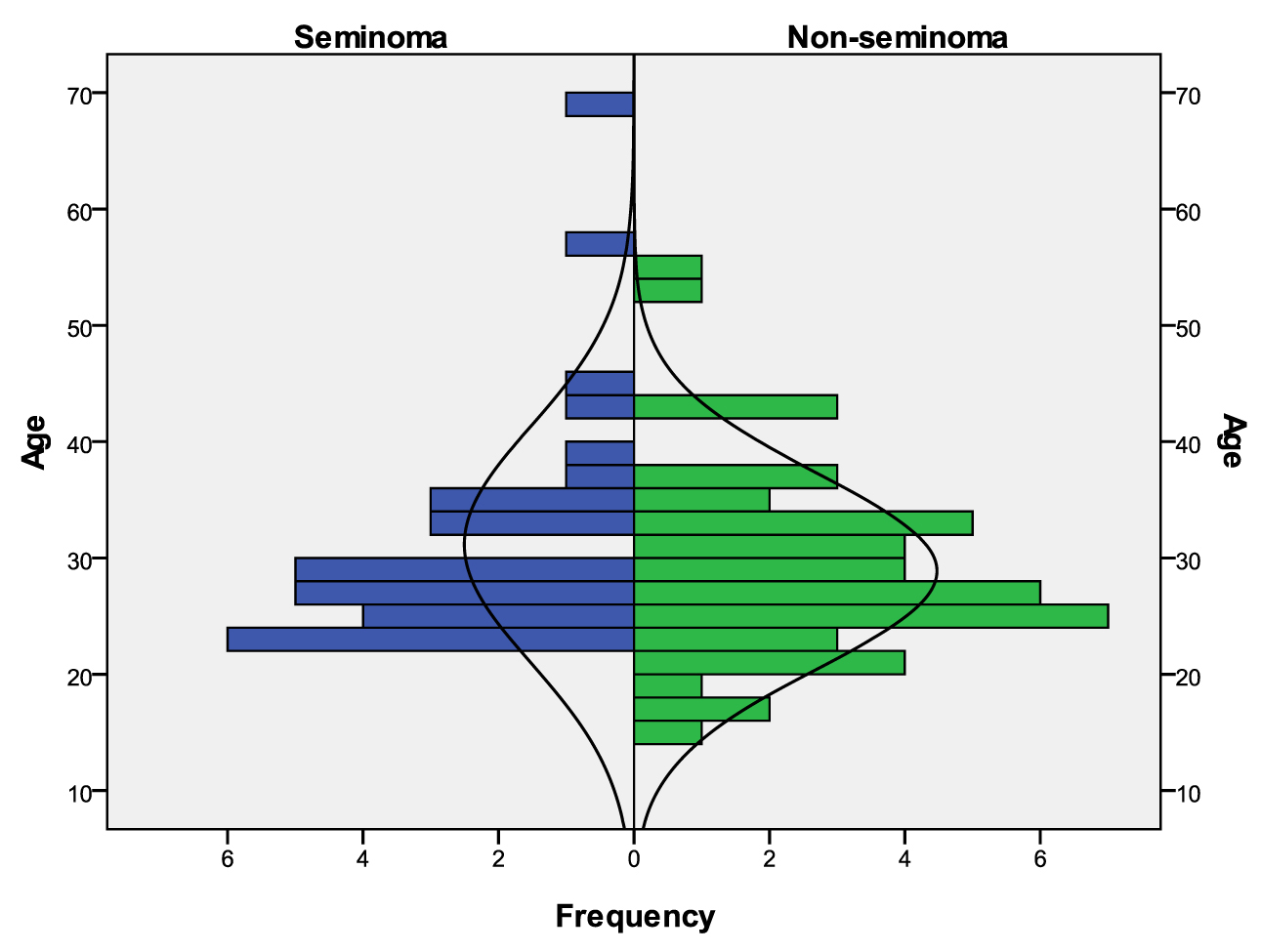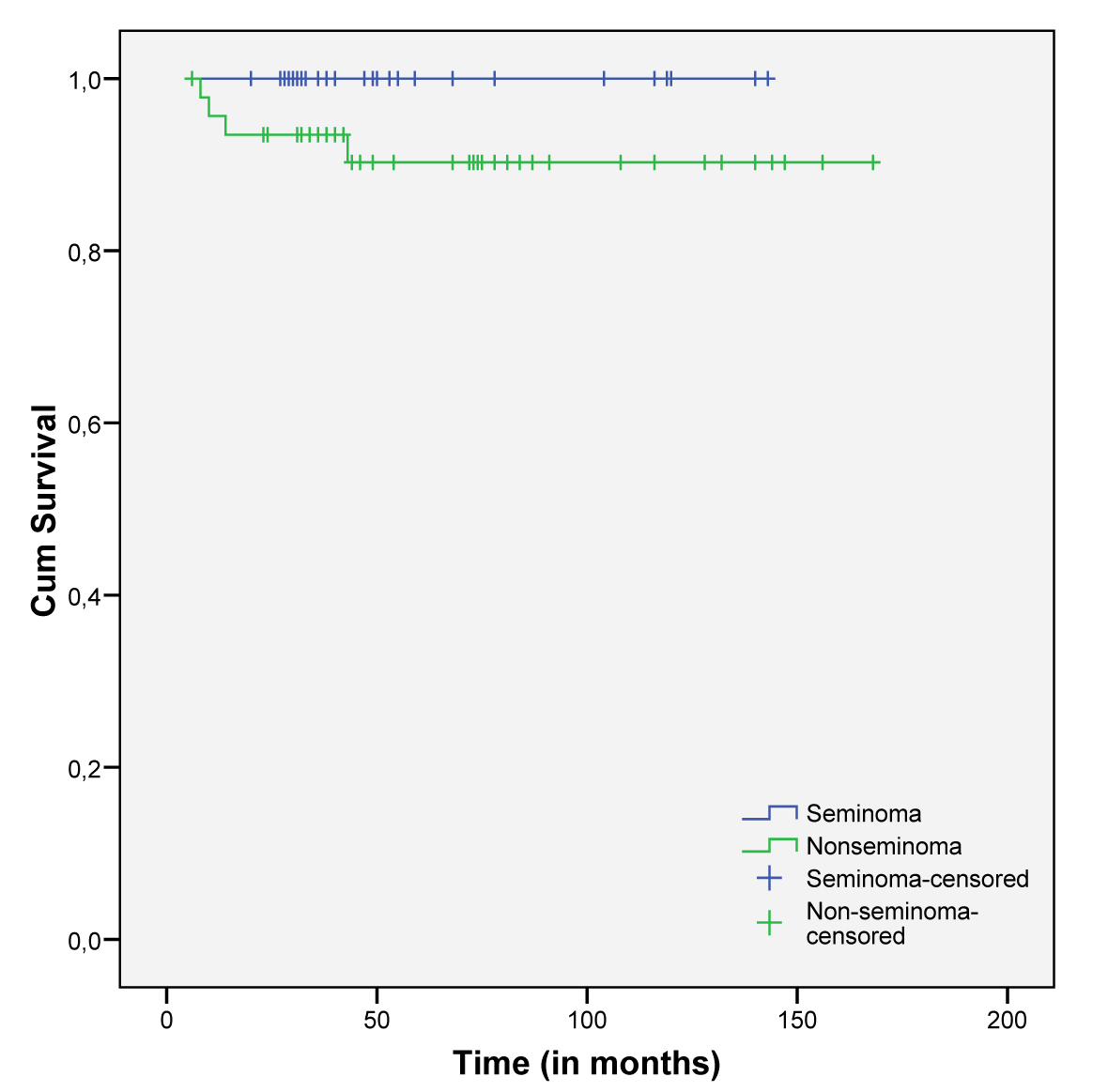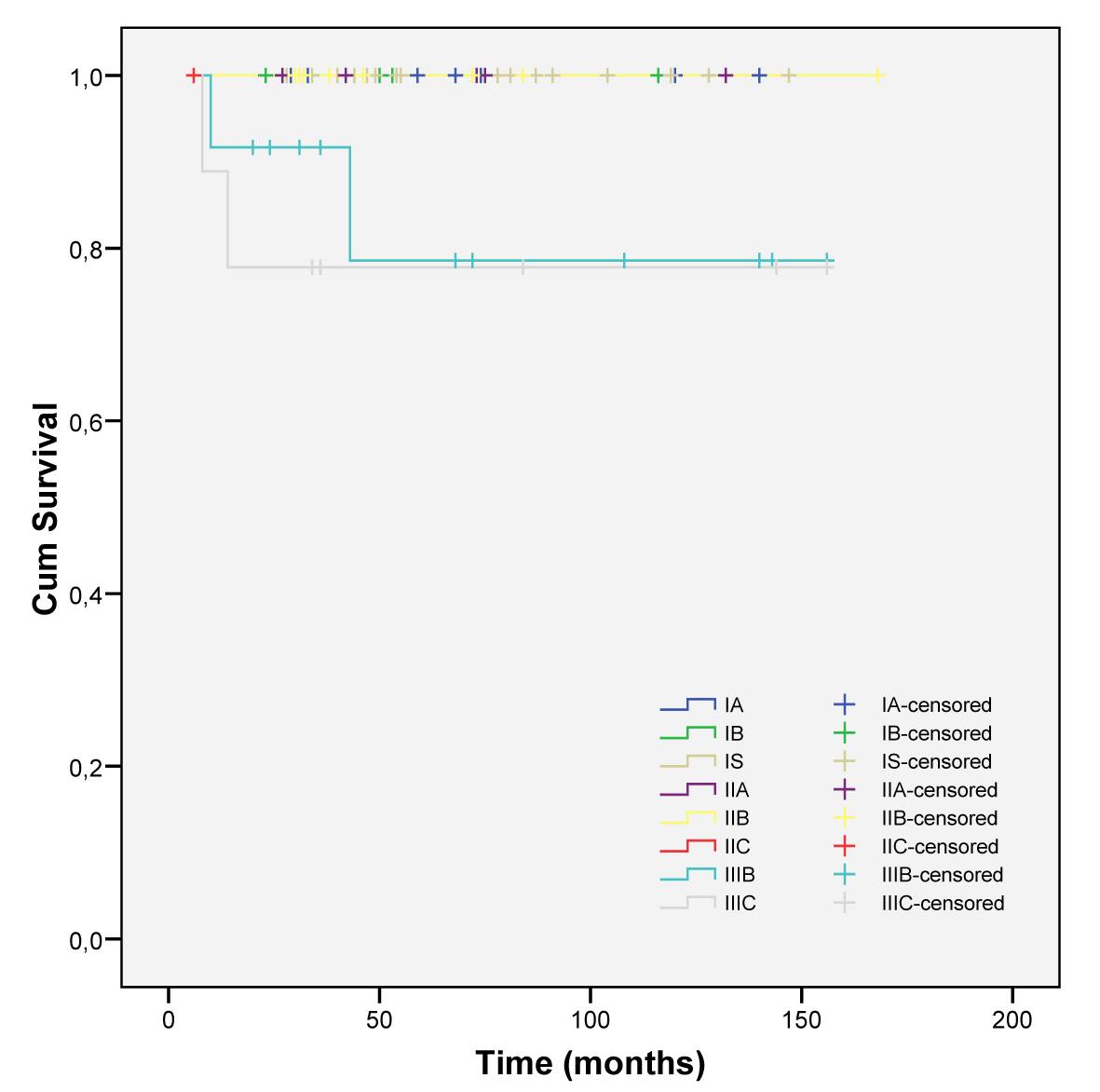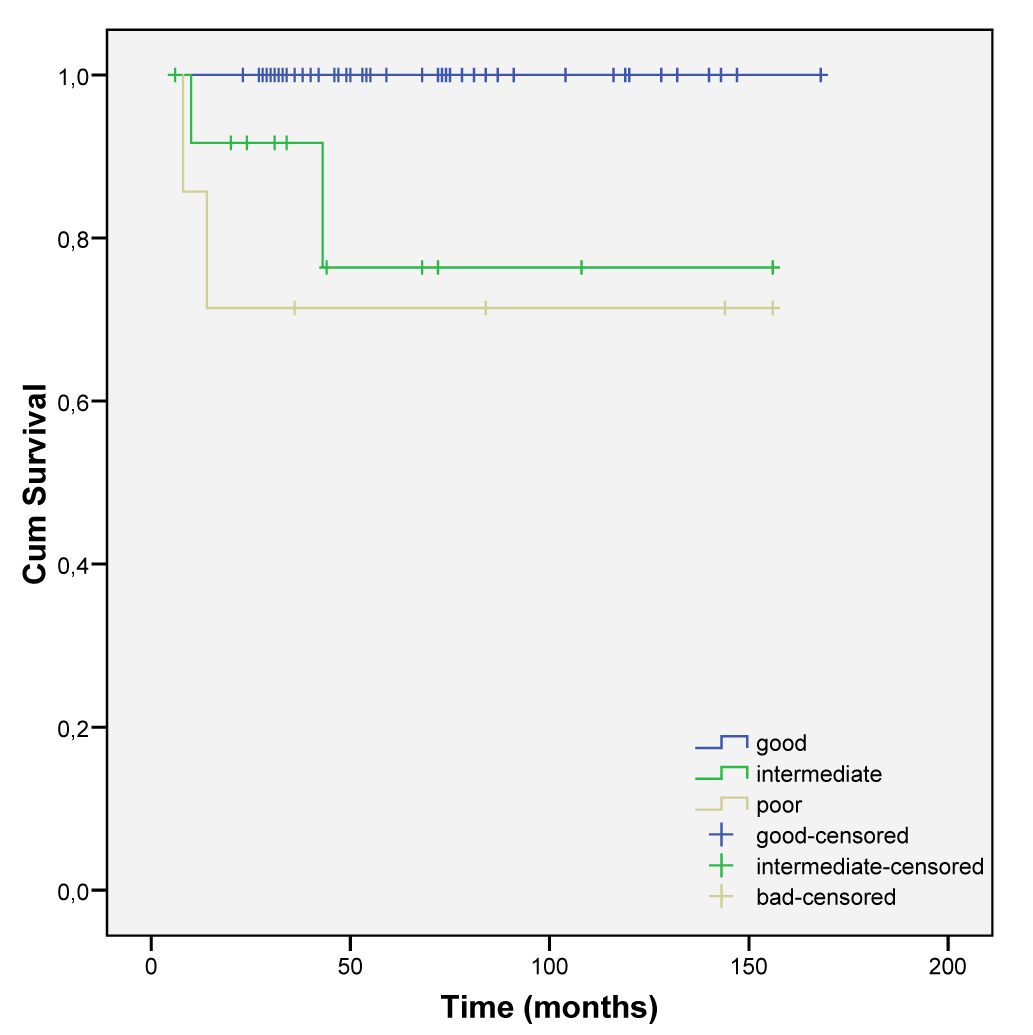
Figure 1. Age distribution considering both subgroups: STCGT and NSTCGT.
| World Journal of Oncology, ISSN 1920-4531 print, 1920-454X online, Open Access |
| Article copyright, the authors; Journal compilation copyright, World J Oncol and Elmer Press Inc |
| Journal website http://www.wjon.org |
Original Article
Volume 1, Number 5, October 2010, pages 187-193
Twelve Years of Experience in the Management of Testicular Germ Cell Tumors at a Referral Center in Portugal
Figures




Tables
| Symptoms | STGCT (%) | NSTGCT (%) | |
|---|---|---|---|
| Localized | Testicular atrophy | 0 | 1 (2.1%) |
| Swelling testis | 6 (18.7%) | 9 (19.1%) | |
| Pain | 9 (28.1%) | 14 (29.8%) | |
| Post traumatic pain | 0 | 1 (2.1%) | |
| Breast enlargement | 0 | 4 (8.5%) | |
| Disseminated | Right atrium thrombus | 0 | 1 (2.1%) |
| Gastro-intestinal | 0 | 2 (4.3%) | |
| Retroperitoneal ganglionar | 1 (3.1%) | 8 (17.0%) | |
| Lumbar pain | 2 (6.2%) | 5 (10.6%) | |
| Bone pain | 1 (3.1%) | 2 (4.3%) | |
| Central nervous system | 1 (3.1%) | 0 | |
| Leg swelling | 0 | 1 (2.1%) |
| Type | No. of cases | Stage | ||||||||
|---|---|---|---|---|---|---|---|---|---|---|
| IA | IB | IS | IIA | IIB | IIC | IIIA | IIIB | IIIC | ||
| Seminomas | 32 | 11 | 3 | 10 | 2 | 3 | 0 | 0 | 2 | 1 |
| Nonseminomas | 47 | 3 | 2 | 13 | 4 | 6 | 1 | 0 | 10 | 8 |
| Embryonal Carcinoma | 14 | 2 | 1 | 2 | 2 | 1 | 0 | 0 | 3 | 3 |
| Mature Teratoma | 1 | 0 | 0 | 1 | 0 | 0 | 0 | 0 | 0 | 0 |
| Imature Teratoma | 1 | 0 | 0 | 0 | 0 | 0 | 0 | 0 | 1 | 0 |
| Choriocarcinoma | 2 | 0 | 0 | 0 | 0 | 0 | 0 | 0 | 1 | 1 |
| Mixed tumors | 28 | 1 | 1 | 10 | 1 | 5 | 1 | 0 | 5 | 4 |
| Teratocarcinoma | 1 | 0 | 0 | 0 | 1 | 0 | 0 | 0 | 0 | 0 |
| Risk Classification | |||||
|---|---|---|---|---|---|
| Good | Intermediate | Poor | |||
| STGCT | NSTGCT | STGCT | NSTCGT | NSTGCT | |
| No residual disease | 29 | 23 | 1 | 4 | 1 |
| Residual disease | 0 | 5 | 1 | 5 | 5 |
| Progression | 1 | 1 | 0 | 2 | 1 |
| Stage | Seminomatous | Nonseminomatous | ||||
|---|---|---|---|---|---|---|
| CT: Chemotherapy; RT: Radiotherapy | ||||||
| CT | RT | Total of patients | CT | RT | Total of patients | |
| IA | 1 | 5 | 11 | 1 | 1 | 3 |
| IB | 3 | - | 3 | 2 | - | 2 |
| IS | 8 | 2 | 10 | 8 | 1 | 13 |
| IIA | 2 | - | 2 | 3 | - | 4 |
| IIB | 3 | - | 3 | 6 | - | 6 |
| IIC | - | - | - | 1 | - | 1 |
| IIIB | 2 | - | 2 | 10 | - | 10 |
| IIIC | 1 | - | 1 | 8 | - | 8 |